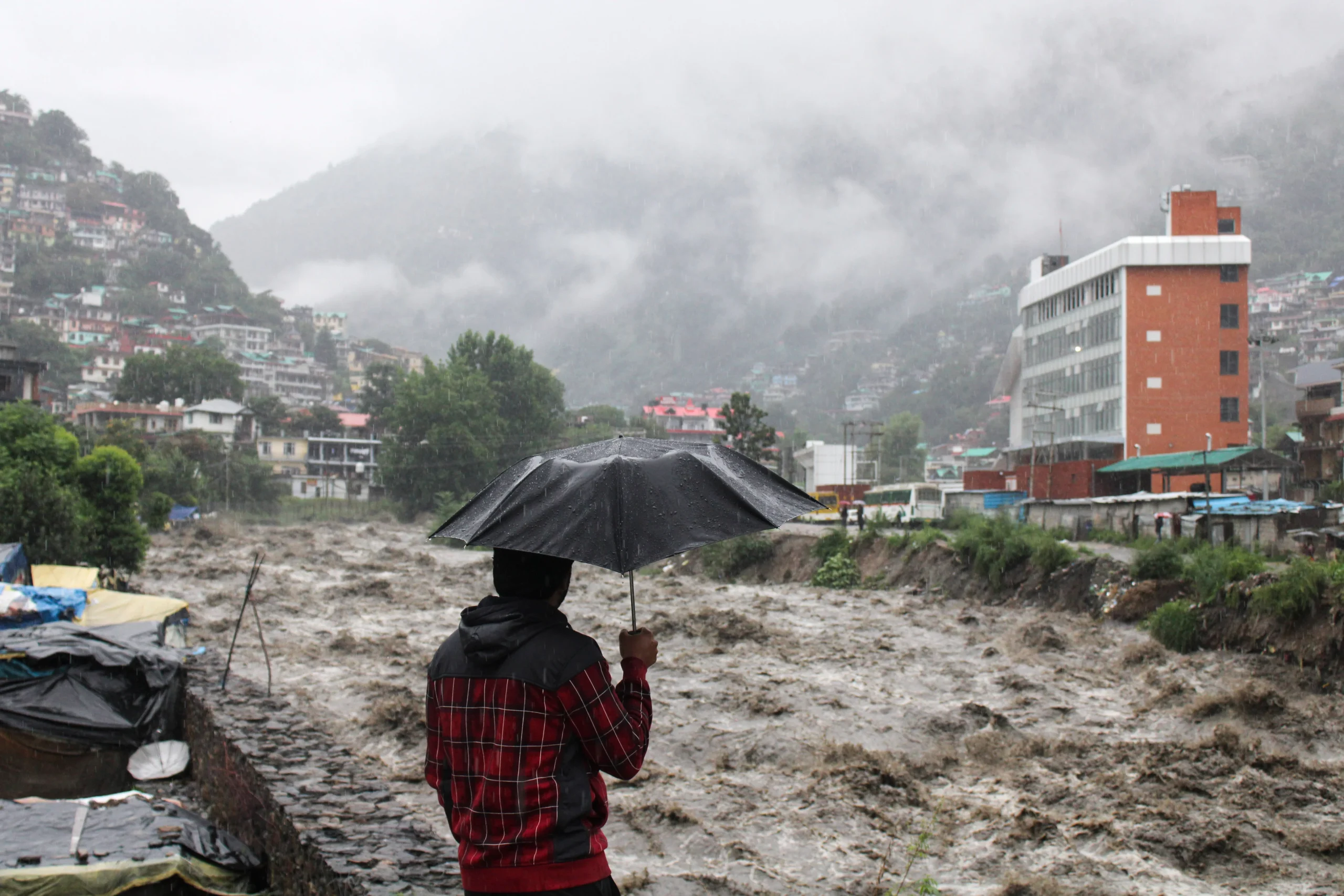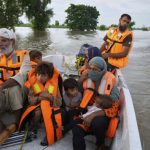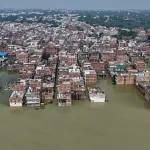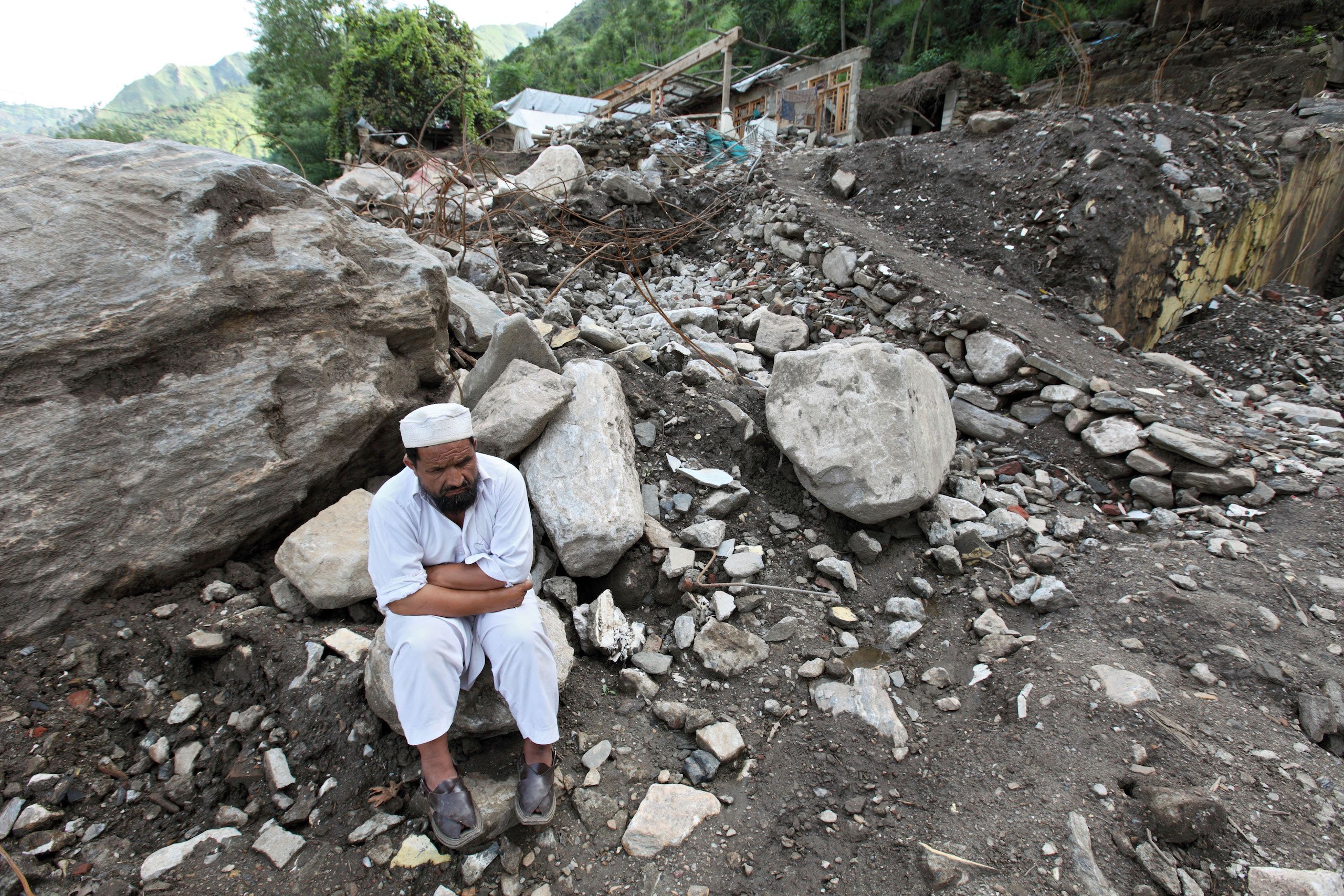Northern India is grappling with one of its most devastating monsoon events in recent memory. Torrential rains have triggered deadly landslides and flash floods, claiming dozens of lives and displacing thousands. The most catastrophic incident occurred near the Vaishno Devi pilgrimage route in Jammu and Kashmir, a site visited by millions each year. Residents, pilgrims, and authorities were caught off guard by the sudden deluge, highlighting the urgent need for stronger disaster preparedness and infrastructure.
Meteorologists reported that several areas experienced unprecedented rainfall, overwhelming rivers, drainage systems, and natural barriers. Experts warn that such extreme weather events are becoming more frequent due to climate change, posing long-term risks to life, property, and regional stability.
Vaishno Devi Tragedy: Pilgrimage Turned Disaster
On August 26, 2025, a massive landslide struck the Vaishno Devi pilgrimage route near Katra, burying parts of the path under tons of soil and debris. At least 34 people lost their lives, while several others were critically injured. The shrine, one of India’s most frequented religious destinations, was temporarily closed to facilitate rescue operations and ensure the safety of pilgrims.
The India Meteorological Department (IMD) reported that the region received over 368 mm (14.5 inches) of rainfall in a single day, far exceeding typical monsoon patterns. The combination of heavy rain, steep terrain, and deforestation in surrounding areas created a perfect storm for landslides.
Rescue teams, including the National Disaster Response Force (NDRF) and local authorities, were immediately deployed. Helicopters and ground teams combed through debris in search of survivors, while emergency medical units treated the injured.
Wider Impact Across Northern India
Jammu and Kashmir
Beyond Vaishno Devi, Jammu and Kashmir experienced widespread devastation. In Kishtwar district, flash floods and landslides claimed 60 lives and left 200 people missing. Rivers such as the Chenab, Tawi, and Basantar overflowed, inundating homes, schools, and roads. Entire villages were cut off, forcing urgent evacuation operations. The scale of destruction has raised concerns about long-term relief and rehabilitation efforts in the region.
Himachal Pradesh
Himachal Pradesh was equally affected, particularly in the Chamba and Mandi districts. Four people died in landslides, while two others sustained serious injuries. Infrastructure suffered extensively: roads, bridges, and essential services were disrupted. A landslide at Banala blocked the Chandigarh-Manali highway, stranding thousands of travelers and cutting off critical transport links. In total, Himachal Pradesh has reported over 300 monsoon-related deaths this season, underscoring the relentless nature of these extreme weather events.
Uttarakhand
Uttarakhand also faced severe consequences. Cloudbursts in the Rudraprayag and Chamoli districts caused flash floods and landslides, claiming at least five lives. Families were trapped under debris or cut off by swollen rivers. Emergency operations are ongoing to locate and assist those affected. The state’s steep terrain, combined with high rainfall, makes it particularly vulnerable to monsoon-related disasters.
Climate Change and Monsoon Extremes
Experts increasingly attribute the intensification of monsoon floods and landslides to climate change. The Himalayan region is particularly vulnerable due to its unique topography. Rising global temperatures increase the atmosphere’s moisture-holding capacity, resulting in heavier rainfall and more frequent extreme weather events.
Dr. Anil Kumar, a climatologist, explained, “What we’re witnessing is no longer the usual monsoon. The frequency and intensity of these floods and landslides are rising, and without proactive planning, we will continue to see high casualties and massive property losses.”
Rescue and Relief Efforts
The government has mobilized extensive resources to respond to the crisis. The NDRF, State Disaster Response Forces, and the Indian Army are all active in affected regions. Emergency shelters have been established for displaced residents, while medical teams provide urgent care.
Financial compensation has been announced for families of the deceased, and authorities are prioritizing the restoration of essential services such as electricity, water supply, and road connectivity. Helicopters and boats are being deployed where access has been completely cut off due to landslides or flooded rivers.
Regional Ripple Effects
The monsoon’s impact is not confined to India. In neighboring Pakistan, floods displaced over 150,000 people in Punjab province, with thousands evacuating homes voluntarily. Authorities report that the release of water from dams in India has worsened flooding in eastern Pakistan, emphasizing the regional implications of extreme weather events and the need for coordinated water management.
Long-Term Lessons and Preparedness
While immediate rescue and relief efforts are crucial, experts stress that long-term strategies are equally important. Improved disaster infrastructure, early warning systems, and sustainable land-use practices can reduce the vulnerability of communities to such events.
Urban planning and environmental conservation are key components. Reforestation, better drainage systems, and landslide mitigation measures must be prioritized. The Himalayan ecosystem is fragile, and human interventions, if not carefully managed, can exacerbate natural hazards.
Frequently Asked Questions (FAQs)
What triggered the landslides in northern India?
Heavy monsoon rains caused the soil to destabilize, resulting in landslides and flash floods. Some areas received over 368 mm (14.5 inches) of rainfall in a single day.
How many people have died so far?
At least 34 people died near the Vaishno Devi shrine, with additional casualties in Himachal Pradesh and Uttarakhand. The total death toll across northern India is over 40, with dozens more missing or injured.
What relief measures are in place?
The NDRF, SDRFs, and the Indian Army are conducting rescue operations. Temporary shelters have been established, medical care is being provided, and financial assistance has been announced for affected families.
How does climate change influence such disasters?
Climate change increases global temperatures, allowing the atmosphere to retain more moisture. This results in heavier rainfall and more frequent extreme weather events, particularly in vulnerable mountainous regions.
What long-term measures can reduce future disasters?
Strategies include resilient infrastructure, early warning systems, sustainable land-use practices, reforestation, and enhanced community disaster preparedness.
Conclusion:
The landslides and floods in northern India are a tragic reminder of the destructive potential of extreme weather. They underscore the need for comprehensive disaster preparedness and climate action. As the monsoon season continues, it is imperative that governments, communities, and international organizations collaborate to safeguard lives and property.
Investing in resilient infrastructure, strengthening early warning systems, and adopting sustainable practices are critical steps to mitigate future disasters. Without such measures, similar tragedies are likely to repeat, with increasingly severe consequences.











